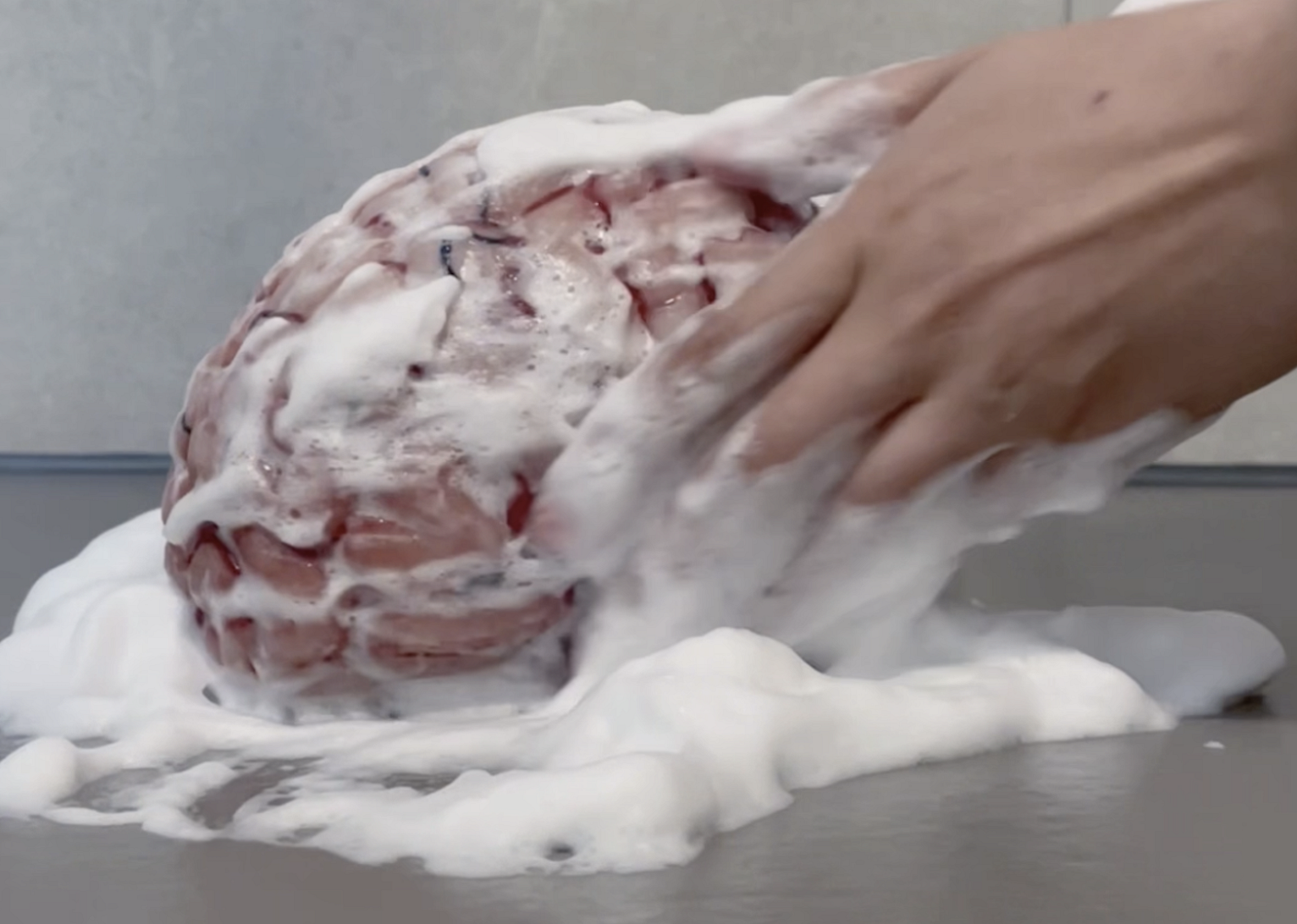Overgaden Neden Vandet 17
DK-1414 Copenhagen
Denmark
Hours: Tuesday–Friday 1–6pm,
Thursday 1–8pm,
Saturday–Sunday 11am–6pm
overgaden@overgaden.org
Established as a kunsthalle for artists by artists back in 1986, O—Overgaden continues to be one of the few large-scale art institutions in Denmark with a focus on supporting emerging practices, local and international.
This autumn, O mounts major institutional shows by emerging practitioners including media artist Maja Malou Lyse, performer Aske Thiberg, filmmaker Madeleine Andersson, and sculptor Villiam Miklos Andersen. Each show is accompanied by a new edition in O’s publication series, released in print and online, and designed by fanfare.
Additionally, O’s associate research fellow Cally Spooner summons all her audio works produced under the umbrella of DEADTIME, her long-term research project rooted at O—Overgaden, previously presented at Graham Foundation, Chicago, for a grand-finale week-long show (October 19–27), PhD DEFENCE, and symposium (October 26). The latter will include, among other critical thinkers and artists, Marie de Brugerolle, Hendrik Folkerts, Irena Haiduk, and Will Holder, and will also mark the launch of Spooner’s novel, Hypothesis of Resistance (Mousse Publishing, 2024).
Finally, O sets forth its program in O-Rooom—an event space designed by Filip Berg to support communal culture, debate, live acts, and impromptu informalities—by housing the parasite publishing-and-exhibiting platform Adagio for Things, founded and run by Wilfred Wagner.
Maja Malou Lyse: MM
August 31–October 27, 2024
Danish artist Maja Malou Lyse (b. 1993) interlaces sex education, feminist theory, and pornographic material with mass media and her own bodily posture. For her exhibition at O—Overgaden, Lyse chases the story of one of the most iconic female images in media history: Marilyn Monroe’s undressed Playboy centerfold, crowning the magazine’s first ever issue in 1953. The photograph was notoriously included by Hugh Hefner without Monroe’s consent, potentially making it the first ever revenge porn act to flood mainstream media, with the male magnate building an entire sex empire—setting off much of today’s erotic culture—on stripping the female subject of autonomy. Performative in nature, the exhibition, titled MM—notably the acronym of both Marilyn Monroe and Maja Malou’s first name—mixes paraphernalia and ready-mades (the artist journeyed to an auction in Hollywood to acquire Hefner’s privately owned original of the Monroe nude) with two videos, documenting Lyse’s pursuit to acquire this particular piece of memorabilia and the artist getting her playboy bunny butt tattoo erased—tracing how Monroe and Hefner are still stamping our bodies as significant cornerstones of a collective Western sexual consciousness.
Aske Thiberg: Shutting Out the Sun
August 31–October 13, 2024
A solo dancer on a platform—high-tension energy and mechanical movements—but with an almost dead facial expression in an automatized performance, perhaps even drained of happiness. In the works by Copenhagen-based Swedish artist Aske Thiberg (b. 1994), he portrays a robot-like body of the digital world, the loneliness of the gamer, pondering questions of social distance and melancholy of social media. For his first large-scale solo exhibition, at O—Overgaden, Thiberg thrives on “locking”—a machinic type of show dance he’s been practicing since childhood—interspersed with monotonous story lines to create a grand new live piece divided into three parts. Unfolding over time, the exhibition will mount three new choreographies, respectively performed by Thiberg himself (August 30–September 15), two professional dancers (September 17–29), and a teenager singing (October 1–13). Fading lines between reality and virtual life, the exhibition will amend O—Overgaden’s opening hours, meaning the kunsthalle’s first floor spaces will only be open during the daily performed live acts.
Villiam Miklos Andersen: Caffè Crema
November 23, 2024–January 26, 2025
Queering familiar logistics—from transport industries to public toilets or pawnshop business—is core to Danish artist Villiam Miklos Andersen’s (b. 1995) sculptural and relational artistic work. For O—Overgaden, Andersen mounts the grand new project Caffè Crema. Trailing his own experience as a truck driver by borrowing the exhibition title from the cheap coffee one can choose at almost any freeway stop through central Europe, the project employs a multitude of objects—including an actual, ready-made coffee machine, hand-carved oak urinals, a stack of real-life carrots, flower decorations, a room-sized freezer, and slot machines made from cedarwood—to create a colorful grand-scale installation alluding to wholesale markets or free trade zones. Meanwhile Andersen’s sculptural jest of tweaking the different objects upends how consumer goods, or even zones of trade, reek of both male-dominated freight trains and the uniformity of powerful infrastructures. Altering typical normative visual standards of commodities, Andersen thus exposes a systemic logistical regulation of mundane actions, purchases, and movement patterns often hidden in plain sight.
Madeleine Andersson: Degenerative Knowledge Production
November 23, 2024–January 26, 2025
Uncovering absurdities of human technologies and their following truisms, Copenhagen-based Swedish artist Madeleine Andersson’s (b. 1993) visual signature is sped-up, research-led storytelling in entrancing moving images. For O—Overgaden, Andersson has created a major new video installation centering on how electricity has been used as a metaphor and means to objectify and optimize, control and not least classify the human brain as dumb, intelligent, or dead. A focal point in Andersson’s new anti-establishment query is the Harvard Medical School committee on brain death, whose 1968 report, which defined irreversible coma through the detection of electric impulses, officially moved the formal diagnosis of death from the heart to the brain, thus setting off a new cultural paradigm. From early 18th-century electrical experiments, Victorian electromedicine, and 20th-century electroshock therapy, through to today’s AI brain, Andersson paves an unorthodox route into a shocking understanding of how electricity has been a hit-or-miss tool in manipulating our understanding of the human mind.
*The exhibition is created in collaboration with INDEX and Kunsthall Trondheim.
Support: O’s main funder is the Danish Arts Foundation. Further generous supporters include Aage and Johanne Louis-Hansen’s Foundation, the Obel Family Foundation, the Augustinus Foundation, and Beckett-Fonden.

